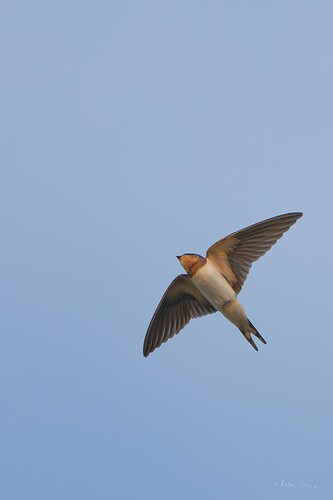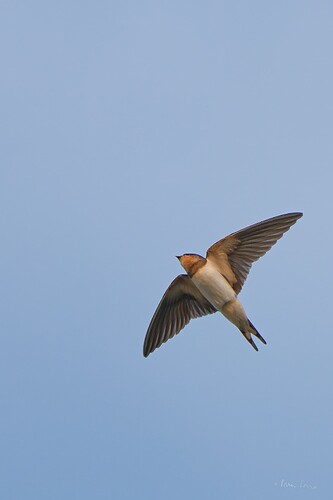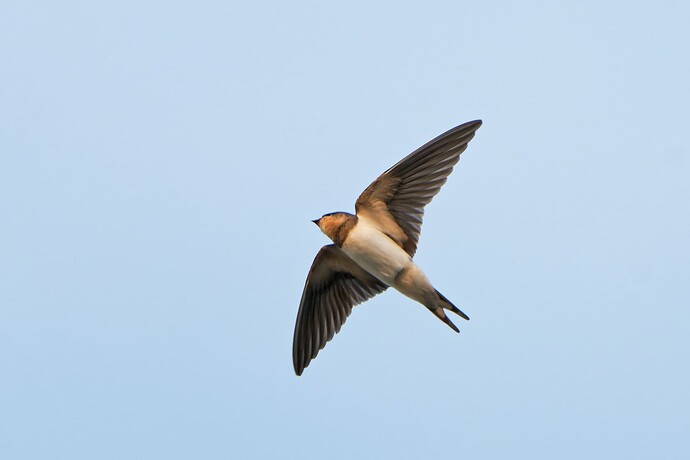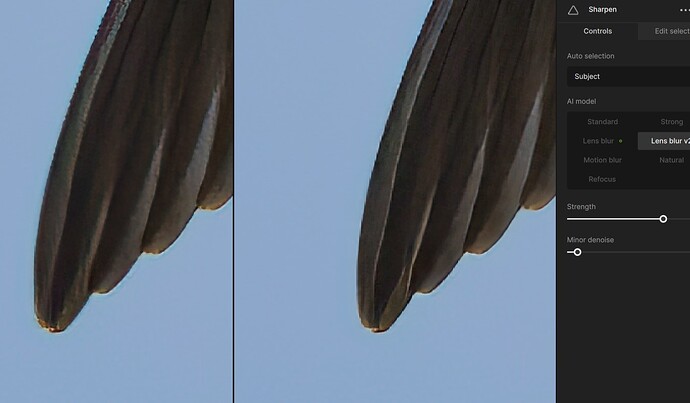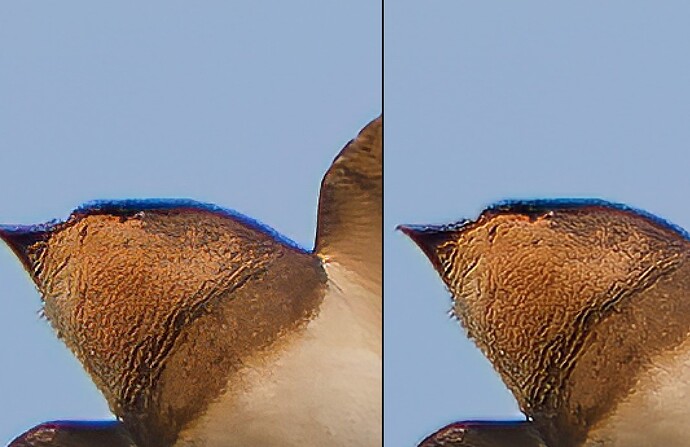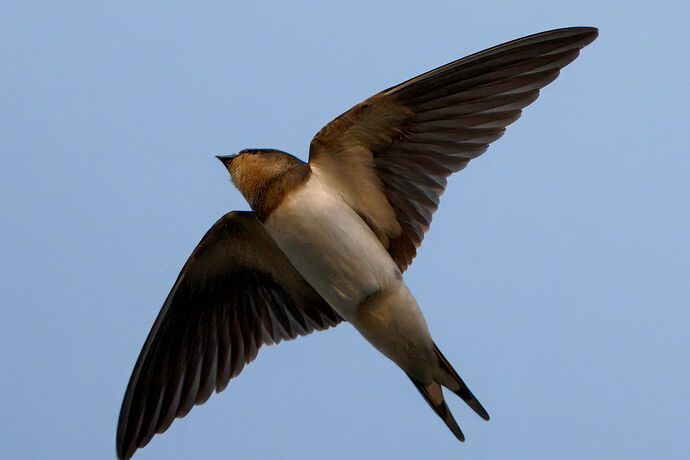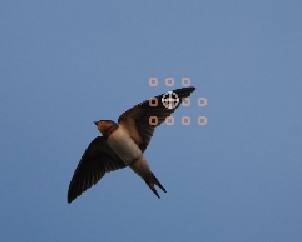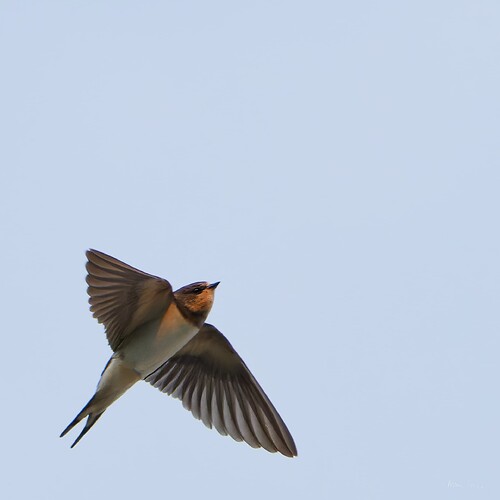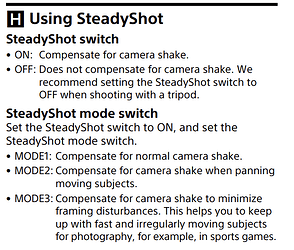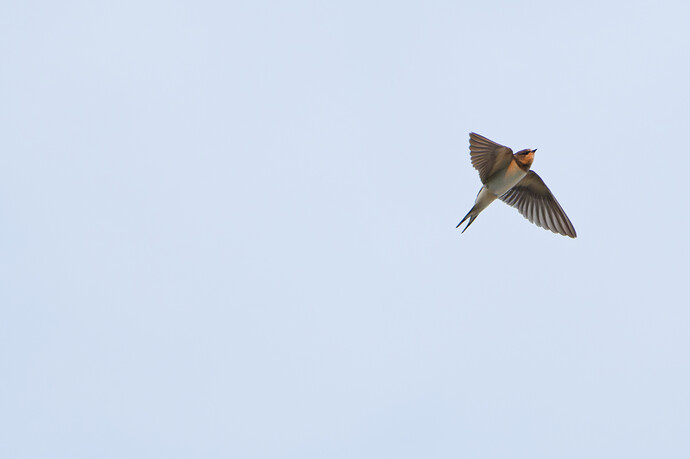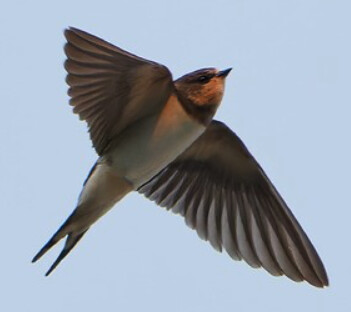3 Treatments of the same frame, which is likely the last swallow this summer. Although the weather is forecast to hold for this week, the birds are swirling higher and higher, and in larger numbers. Back to the shot: it was still quite early this morning, so light in short supply. I don’t like setting the shutter speed longer than 1/2500, and one would like the DoF to give a sharp image over the whole subject, so f7.1 and fingers crossed here.
Here is the original frame:
D6700092.ARW (33.3 MB)
Too much empty space, so I cropped on the same aspect ratio, using Deep Prime for Noise Reduction, and a little sharpening (motion blur 20, noise reduction 1) in Topaz Photo AI.
An alternative sharpening in Nik 6 Output sharpening (someone on another forum saw some artefacts in a previous upscaled Topaz AI treatment)
Now maybe someone can see a difference? For balance, here is a treatment in Luminar Neo - I bought a collection of templates for birds, but was annoyed not to find one for swallows.
Which, if any, do people like, and why?
